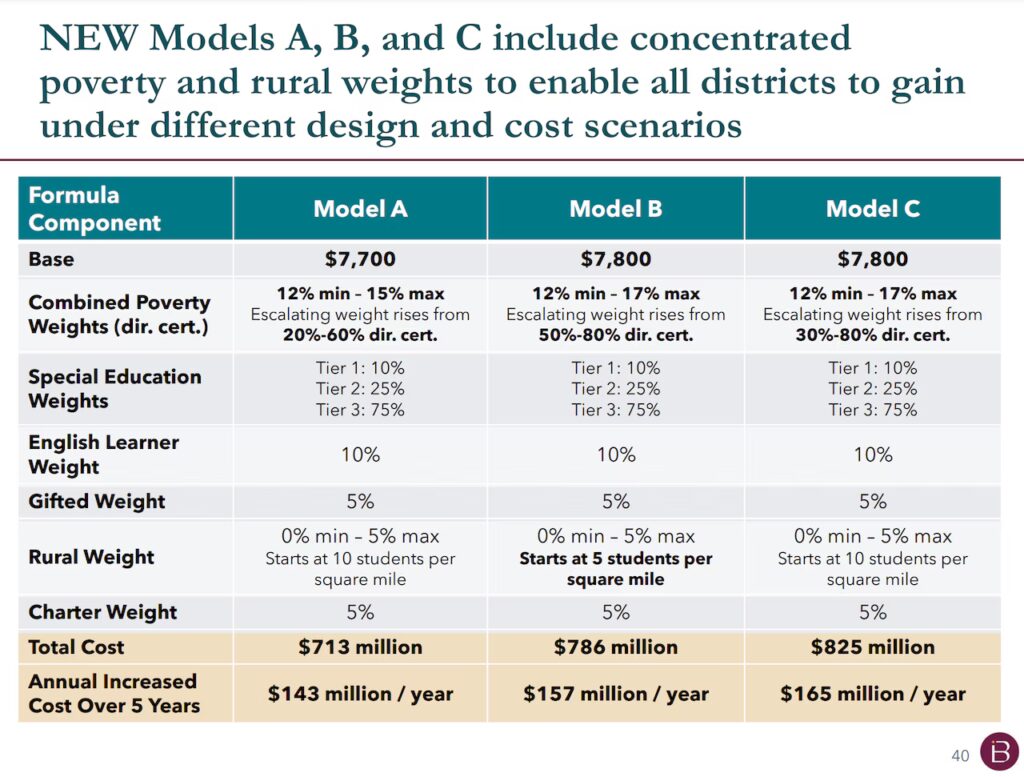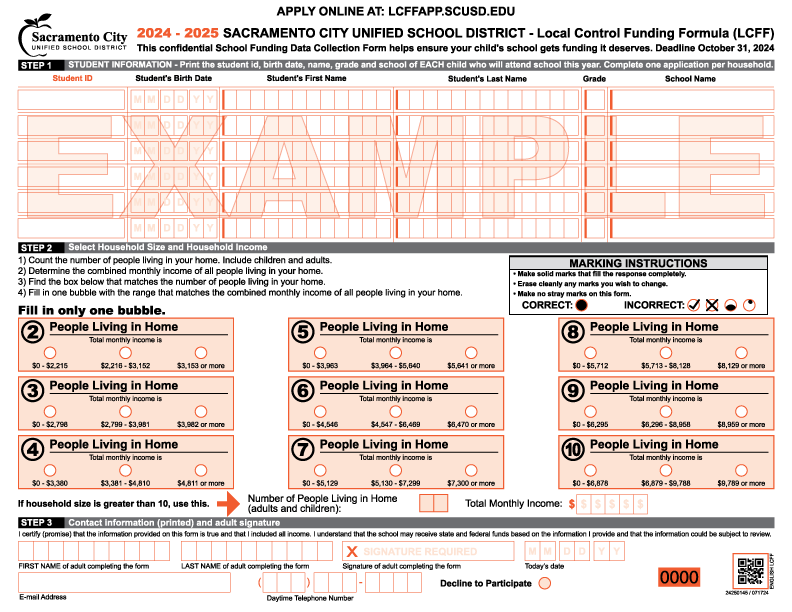Under the three newly proposed school funding formulas, every Alabama school district would receive more money per student. In some cases up to $2,000 per student.

Based on research from the American Economic Journal: Applied Economics posted in targeted funding helps close the gap between high-poverty and low-poverty school districts. In the US, 45 states currently use a student socioeconomic weighted formula to determine state funding for districts. The new models all show that:
- Provide more funding to better meet the needs of students.
- All districts see increased per-pupil funding.
- School systems receive more flexibility in allocating the funding they receive through the state’s funding formula.
- Systems retain discretion over local funding.
Several states address poverty in their formulas through two mechanisms in combination.
Direct student weight for student poverty-
A weight for student poverty is a key feature of most student weighted formulas
- Many states use a weight – typically a percentage of the base amount defined in statute – to drive additional funding to support the needs of students from lower-income backgrounds
- All the models presented at the November 12th Commission meeting and current models include a weight for student poverty
Weighting for concentrated poverty-
In states with pockets of deep poverty, an additional weight for concentrated poverty is appropriate
- Research shows that students living in areas with highly-concentrated poverty have higher levels of educational need than students in other communities
- Accordingly, some states provide an additional weight for students in LEAs with the highest levels of poverty
How is district poverty determined?
For three quarters of a century, schoolchildren from low-income families have received low- or no-cost meals under the National School Lunch Program. In 2019–20, the program provided subsidized lunches to nearly 22 million students at about 94,000 public and nonprofit private schools across the United States.
Students are enrolled in the program in two ways. Through direct certification, students are automatically enrolled for free school meals if their families receive benefits such as food assistance, Medicaid, and Temporary Assistance for Needy Families, or if they are migrant, in foster care, or homeless. Alternately, school districts administer income surveys to parents to determine eligibility. Students from families with incomes at or below 130 percent of the federal poverty line qualify for free meals, and those from families with incomes between 130 and 185 percent of the poverty line qualify for reduced-priced meals. State and federal aid programs like Medicaid and food stamps verify incomes reported by participants, while school districts usually do not. In addition, if an attempt to verify eligibility fails, a student’s enrollment in the lunch program ends, but there are no other repercussions.
Enrollment in the school lunch program is a commonly used proxy for student poverty in policy, research, and for other purposes. But is it an accurate indicator of family income? To answer this question, we analyze school meal enrollment and two alternative measures of poverty in Missouri schools during the 2016–17 school year to determine how closely they are aligned. Our data on meal enrollment are from the state education department and show students’ National School Lunch Program designations. Each student is coded as enrolled for free meals, reduced-price meals, or neither. Our alternative poverty measures are based on students’ direct certification data and estimates of school-neighborhood poverty from the National Center for Education Statistics, which are based on the incomes of households located near schools as reported in the Census Bureau’s American Community Survey.
This information is from EducationNext.org.
Where RocketScan come in!
With this much funding on the table, data collection is your friend and time is the enemy. It is important to have a knowledgeable and professional partner to help make this process as efficient and accurate as possible. We at RocketScan strive to bring the most funding to your district!
We are here to help your district get the most funds for your students!






